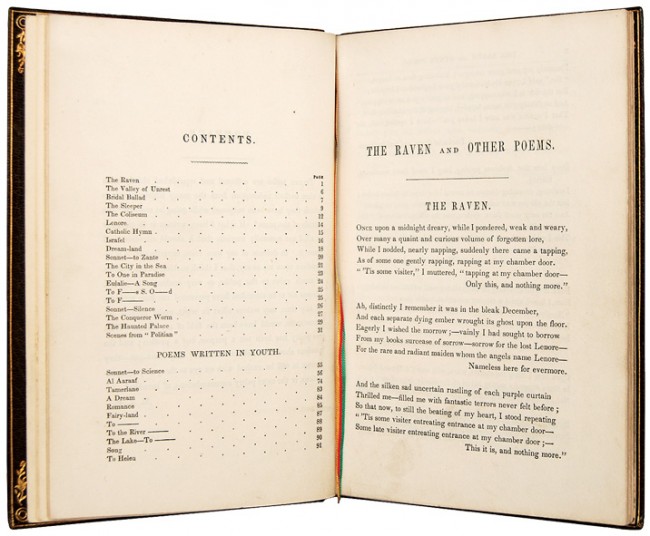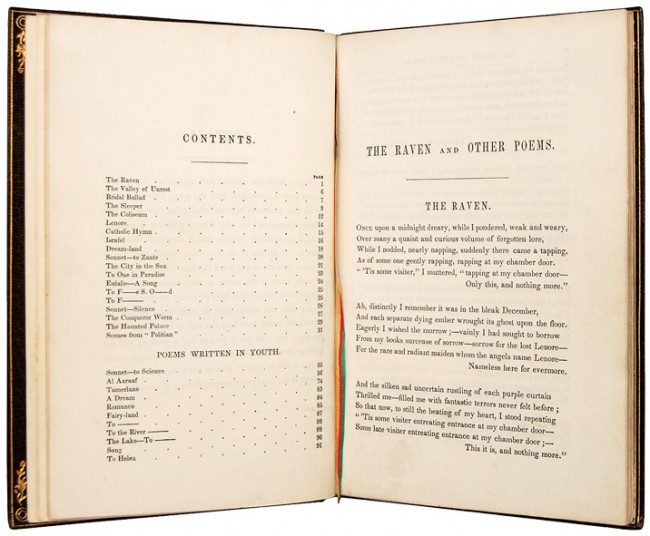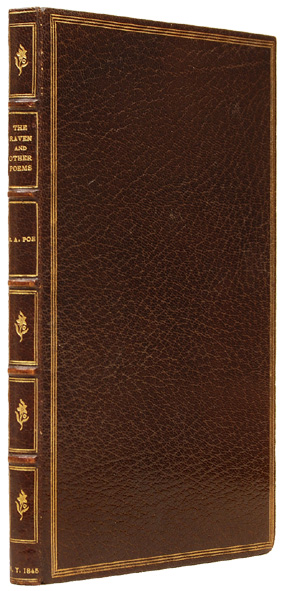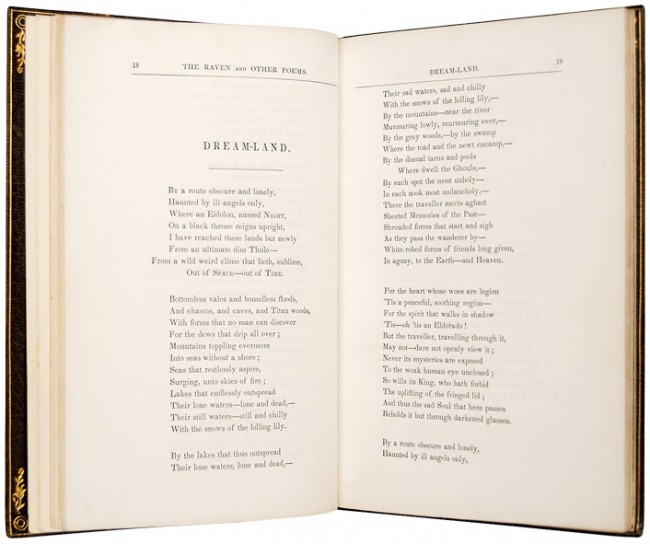Earlier his week Peter Harrington acquired a first edition of Edgar Allan Poe’s The Raven and Other Poems, published in New York in 1845.
“The Raven” had become an instant success when it was first printed in the magazine American Review in January 1845, and its publication in book form has been described as “the most important volume of poetry that had been issued up until that time in America” (Allen, p. 667). The book was originally in cloth, but this copy was rebound in classic New York style brown morocco by Stikeman & Co. at the turn of the twentieth century – beautiful binding that compliments the book’s origin.
Even more intriguing than the book itself, our copy is paired with a small Poe manuscript, part of a literary review that wasn’t published until after his death when it was included in his collected works.
It reads “Among the author’s less elaborate compositions, however, “The Angel’s Visit”, written since the publication of her “Child of the Sea”, is perhaps, upon the whole the best – although “The Forsaken” and “La Vega” are scarcely, if at all, inferior”.
In addition to the fame gained from his poetry and short stories (and despite his instability and alcoholism), Poe was regarded as an insightful and acerbic literary critic. Contemporary essayist James Russell Lowell called him “the most discriminating, philosophical, and fearless critic upon imaginative works who has written in America” (Quinn p. 659). In this case, however, Poe may have blunted his literary judgment in light of the fact that the poet, Sarah Ann Lewis, regularly helped to care for his dying wife Virginia.
But in addition to the piece’s literary and biographical issues, a more prosaic question arises: why is this small piece of paper separated from the rest of the review? The answer is simple, if disturbing to many bibliophiles – his editor did it. It was common practice during the nineteenth century to cut up the manuscripts of celebrated authors and sell the pieces as souvenirs, a slightly less macabre version of saints’ relics. The same thing was done to some of John Keats’s work.
In this case the culprit was probably John R. Thompson, the editor of the Southern Literary Messenger, which had published several of Poe’s essays, including an earlier review of Lewis’s poetry. Thompson also published Poe’s The Rationale of Verse, and later he distributed pieces of it, sometimes adding his own identifying notes (the number 5 on the review above may well be in his hand). Nine fragments of that essay are still known, scattered to various institutions and collections, with one selling for $30,000 at Christie’s in 2009.
So our set comprising first edition and manuscript is an interesting record not only of the author and his publication history, but the fashion for literary relics. I haven’t been able to locate any other pieces of this particular review in previous sales records; if you know of any we would love to hear about them. *Update 16 March, 2012: Jeffrey A. Savoye of the Edgar Allan Poe Society of Baltimore has kindly let us know he’s compiled a record of all the known fragments of this and other Poe manuscripts, which can be read here: Thanks Jeffrey!*
To see many more Poe manuscripts and texts visit the websites of the excellent Susan Jaffe Tane Poe Collection at Cornell and the Edgar Allan Poe Digital Collection at the Harry Ransom Center.









